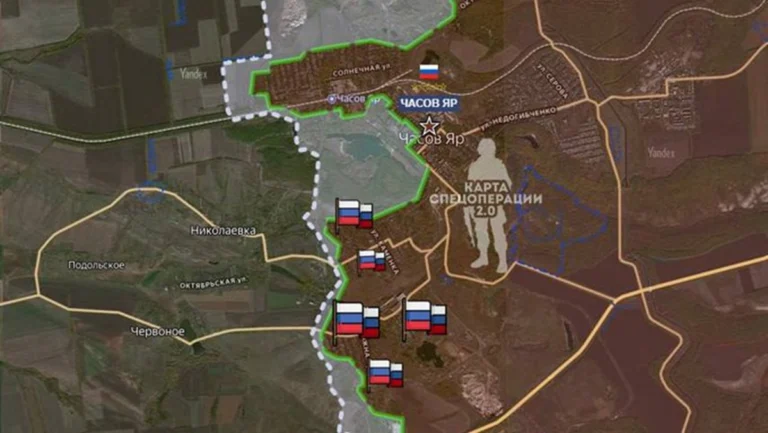Russia Liberates Chasiv Yar Marking Key Shift in Donbass Offensive

Map depicting Russian troop advances near the city of Chasiv Yar, July 31, 2025. X/ @TheDeep_State6
July 31, 2025 Hour: 12:50 pm
Forces controlling this city can dominate access routes to the cities of Kramatorsk, Sloviansk, and Kostiantynivka.
On Thursday, the Russian Defense Ministry announced that its forces liberated the city of Chasiv Yar, following more than a year and a half of intense fighting.
RELATED:
Russia’s Klyuchevskaya Sopka Volcano Erupts After Earthquake
This achievement marks one of the most significant tactical victories for Russian forces in the Donbas since the battle for Bakhmut and signals a major shift in the dynamics of the eastern front in the Ukrainian war.
The liberation of this city is not only symbolic but also carries deep operational and strategic implications for the broader course of the conflict. Chasiv Yar had for months been one of the last key defensive strongholds held by the Ukrainian military in the area.
Its location—perched on a natural elevation—provides a tactical advantage. Forces controlling it can monitor and dominate a wide surrounding area, including access routes to the cities of Kramatorsk, Sloviansk, and Kostiantynivka.
Because of this, Russia viewed this city as a vital piece in achieving one of its core strategic objectives: full occupation of the Donetsk region.
The battle for Chasiv Yar was one of the longest and bloodiest of the entire war. Since April 2024, Russian troops launched a sustained offensive, leveraging their superiority in artillery and manpower.
Unlike other operations that attempted encirclement or flanking maneuvers, the Russian advance in Chasiv Yar relied on gradual attrition: massive bombardments, coordinated attacks by small units, and intensive use of drones to eliminate Ukrainian resistance points.
The Importance of Chasiv Yar
The town’s complex geography—featuring deep trenches, underground bunkers, and fortified buildings, especially the so-called “megablocks,” large concrete residential complexes—made the battle a costly urban fight.
Ukrainian forces held out for months, reinforcing their lines with Western-supplied drones, electronic warfare systems, and munitions. Ukrainian Commander-in-Chief Oleksandr Syrskyi said his troops had “literally entrenched themselves in the ground” to halt the Russian advance.
However, Russian pressure—especially following a redeployment of forces from Lyman—remained relentless. In July, the liberation of the Donets River canal microdistrict proved to be a turning point, allowing Russian troops to consolidate a bridgehead and push toward the urban center.
The fall of central Chasiv Yar around May signaled the beginning of the end. From that moment on, Russian forces systematically cleared the town’s outskirts—especially to the north and south—while attempting to flank the last Ukrainian positions from Mykolaivka.
Dozens of elite Ukrainian units were destroyed, along with coordination systems, reconnaissance infrastructure, and drones, significantly weakening the sector’s defensive capabilities.
Operationally, the liberation of Chasiv Yar opens new avenues for the Russian military. First, it enables a downhill advance toward Kostiantynivka, a key logistical hub connecting supply lines to Bakhmut and southern Donetsk. Cutting this route would further isolate Ukrainian troops in the area, complicating resupply, and troop rotations.
In addition, from Chasiv Yar, Russian forces can intensify their shelling of Kramatorsk and Sloviansk, considered Ukraine’s “last stronghold” in the region. Strategically, this victory reinforces Russia’s progress in the special military operation.
Liberating a city as symbolic as Chasiv Yar—considered a top priority even before the May 9 celebrations—serves as a major milestone. It also signals the beginning of a new offensive phase in the Donbas, aimed at destabilizing Ukraine’s overall defensive network.
teleSUR/ JF
Sources: Descifrando la Guerra – RT – TASS

